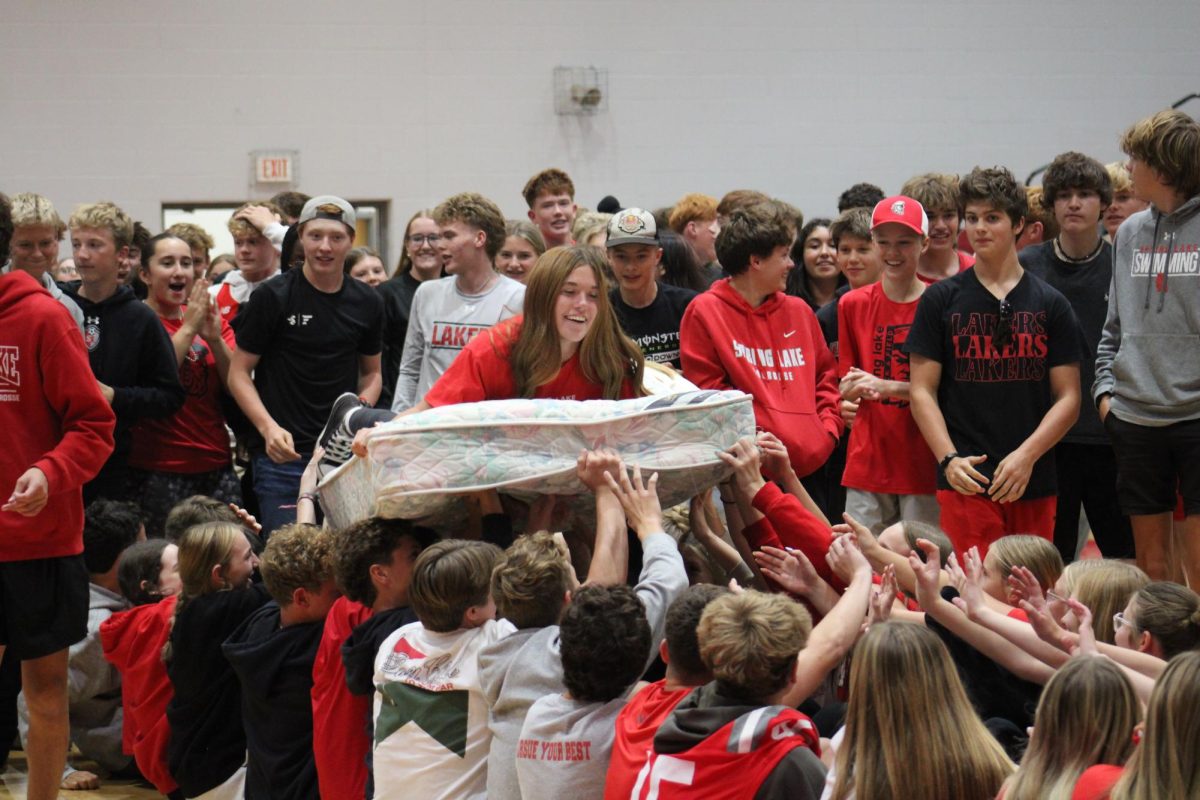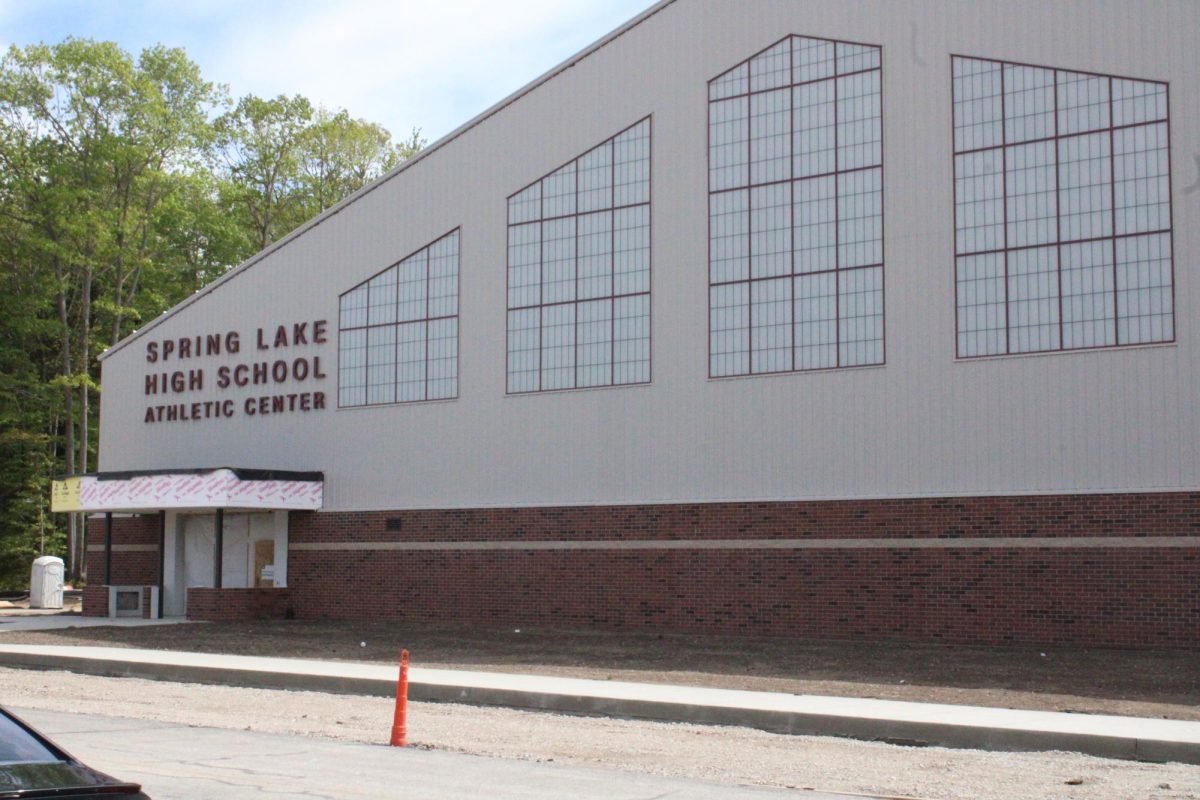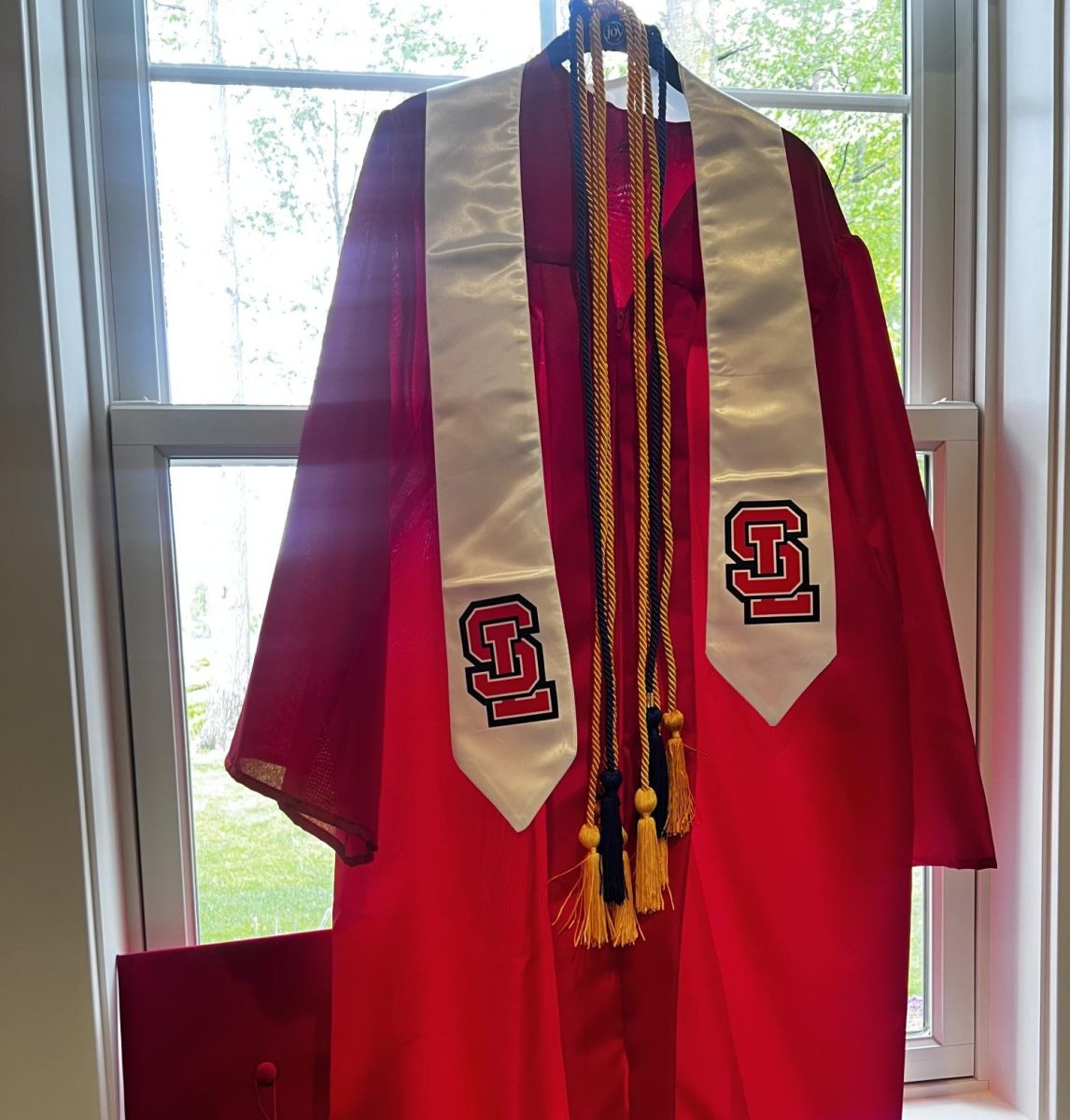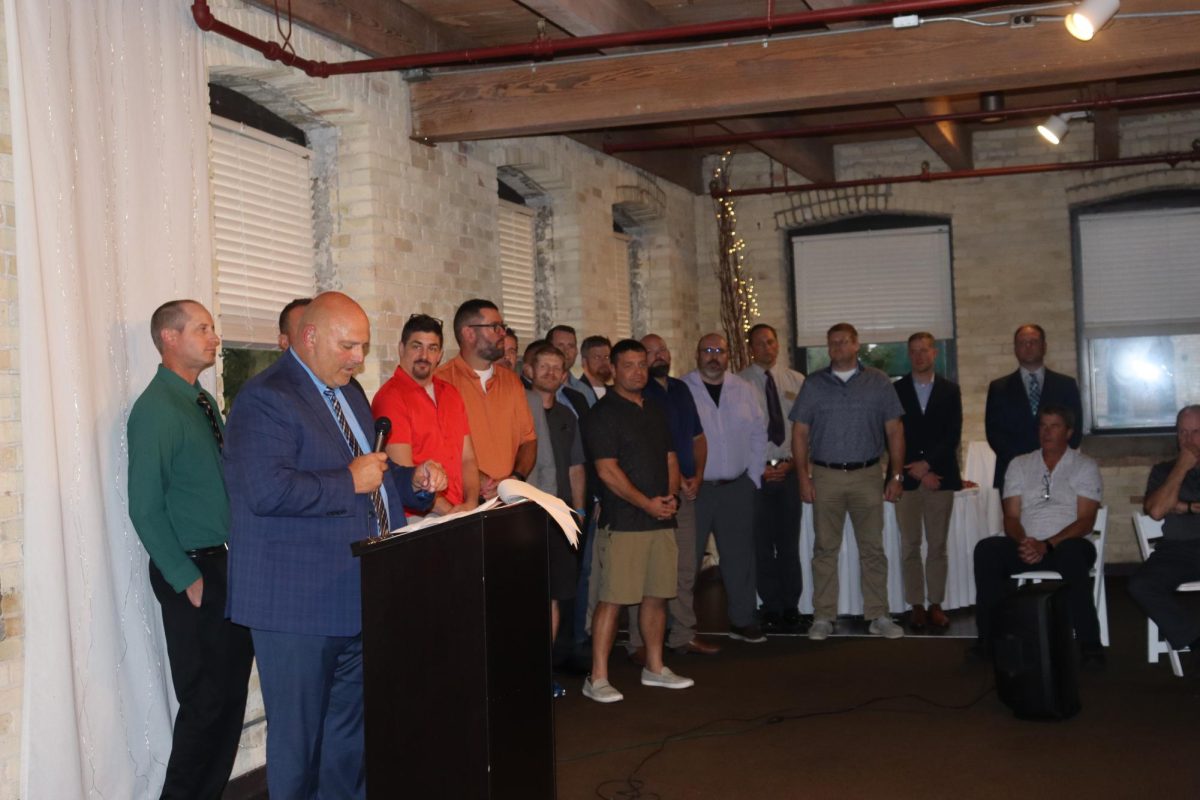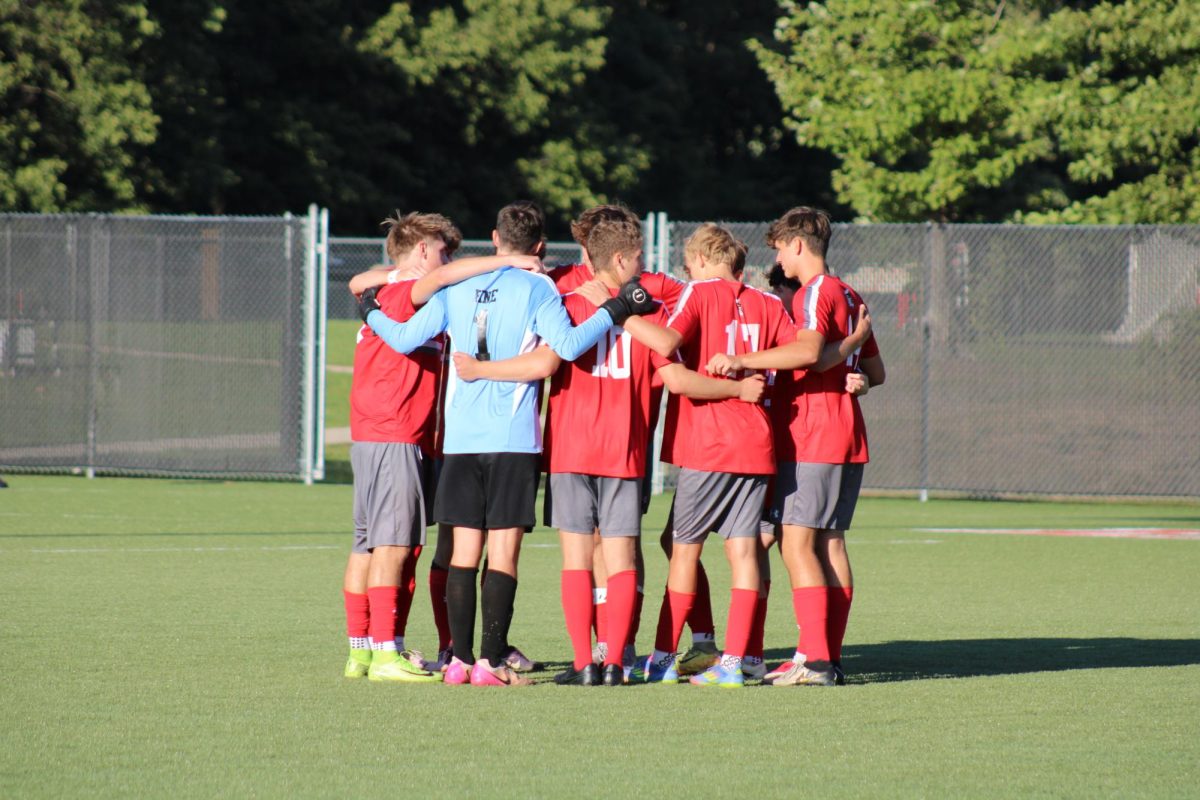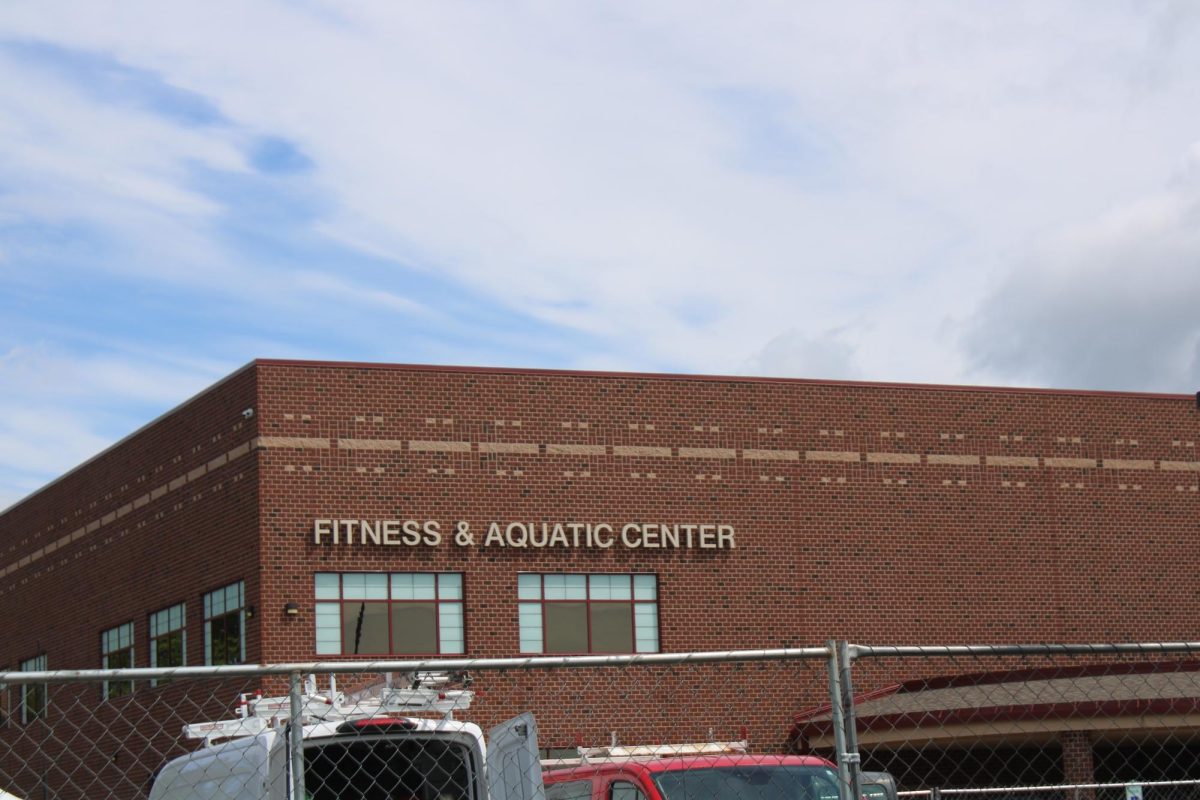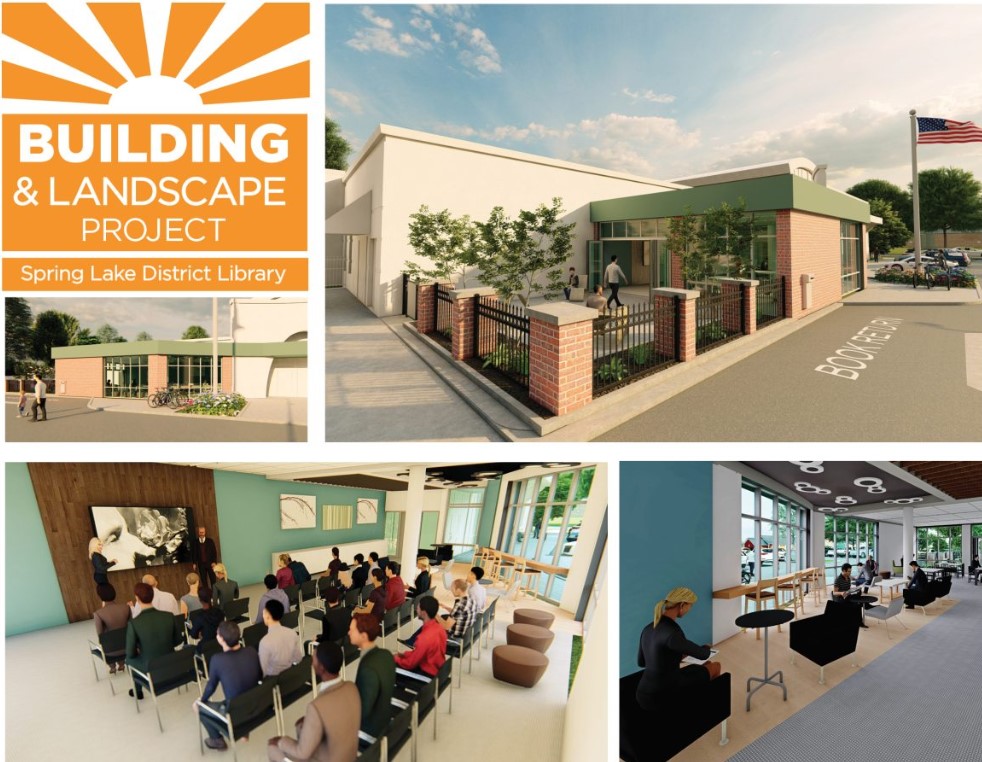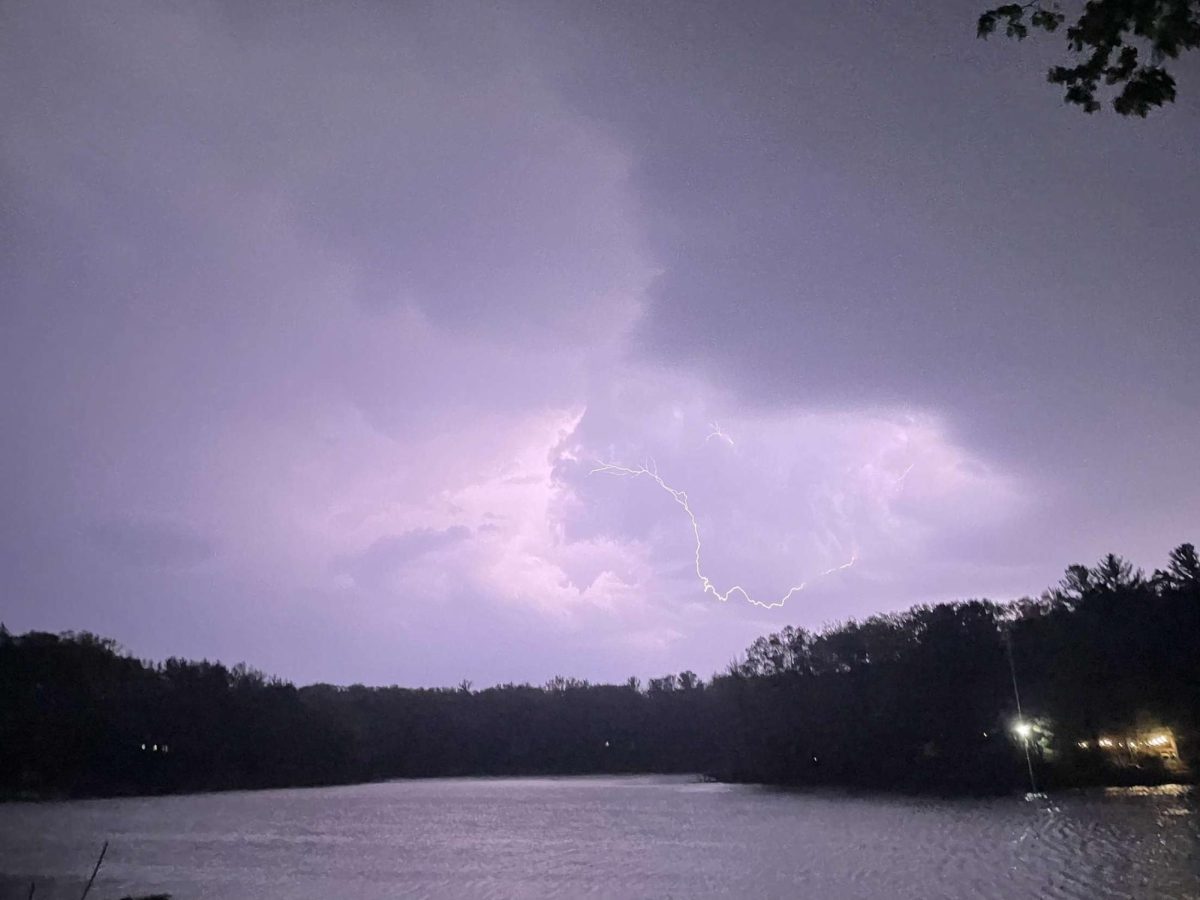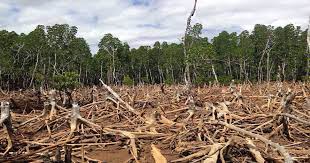
As the plans from the 2023 bond proposal go into effect, Spring Lake Public Schools is visually changing, especially at the high school.
This week, behind the high school, many trees are being clear-cut to make room for the incoming fieldhouse. Not only does this tree removal temporarily force teachers and staff to park farther from the school entrances, it also destroys the habitats of thousands of plants, animals, and fungi.
While the fieldhouse will certainly have its uses for football, cheer, band, and other groups, it is important to recognize that these natural habitats are immensely valuable.
The area behind the high school being clear-cut is a temperate deciduous forest. These forests are characterized by trees that lose their leaves each autumn and experience seasonal temperature changes. This environment can be divided into three main levels of plant life. The forest floor holds moss, ferns, lichens, wildflowers, and other small plants. Shrubs fill the middle layer, and the canopy is full of hardwood trees like oak, maple, beech, and birch trees.
All of these trees can be found on the high school grounds, in addition to some coniferous trees like the Eastern White Pine and Eastern Hemlock. These forests are dynamic, and the plants in them are constantly growing and reproducing, which promotes diversity in the ecosystem.
Temperate deciduous forests also support a wide variety of animal life. Birds like woodpeckers, warblers, hawks, cardinals, and owls live in and migrate through these forests, while mammals like deer, racoons, and opossums use deciduous forests as a home and food source year round. Monarch butterflies also migrate through these forests, and other insects like stickbugs, moths, and bees act as vital pollinators and primary consumers in the food web.
When these habitats are destroyed, the animals that live in them are forced to find a new home and new food source, often creating competition in a nearby forest and decreasing the number of animals that survive. Long term, the population of native plants and animals will decrease as a result of a smaller habitat with less available resources, contributing to the rise of endangered species.
In addition to the habitat loss for plants and animals, students and staff have lost a natural space. The view outside the windows of every classroom on the eastern side of the building is no longer one of green trees and native birds, instead it is one of construction equipment that will be replaced by a building.
This may seem like a small price to pay for a multi-purpose athletic facility, but research has shown that green environments improve cognitive function, mental and physical health, and academic performance. They also reduce air and noise pollution, improving the health and focus of people near them.
The clear-cutting of this large area of trees that is so close to the high school will have an impact as the students, staff, plants, and animals affected will be forced to adapt to this environmental change.

